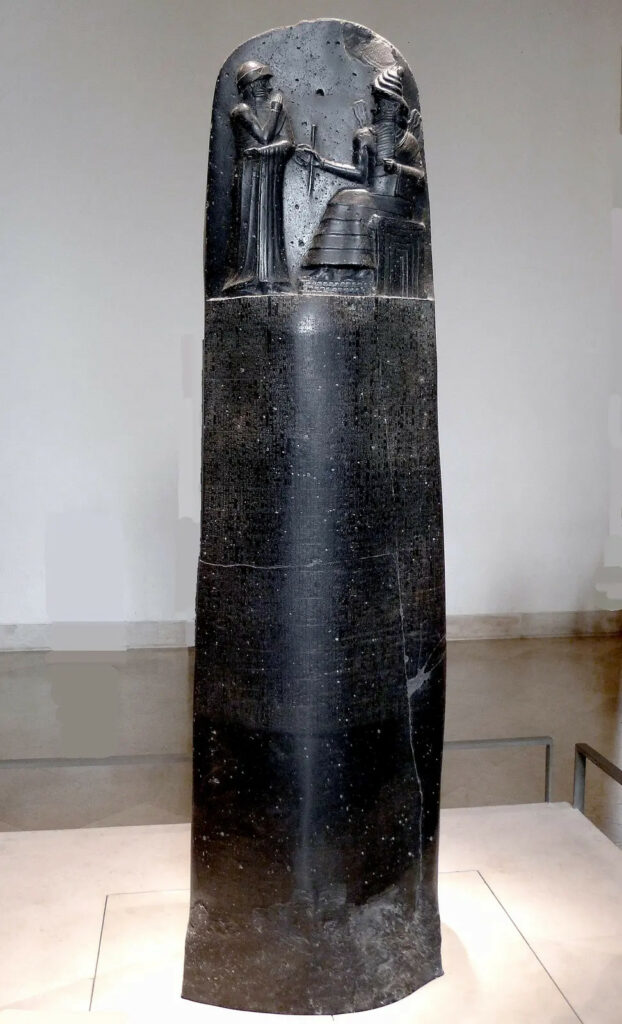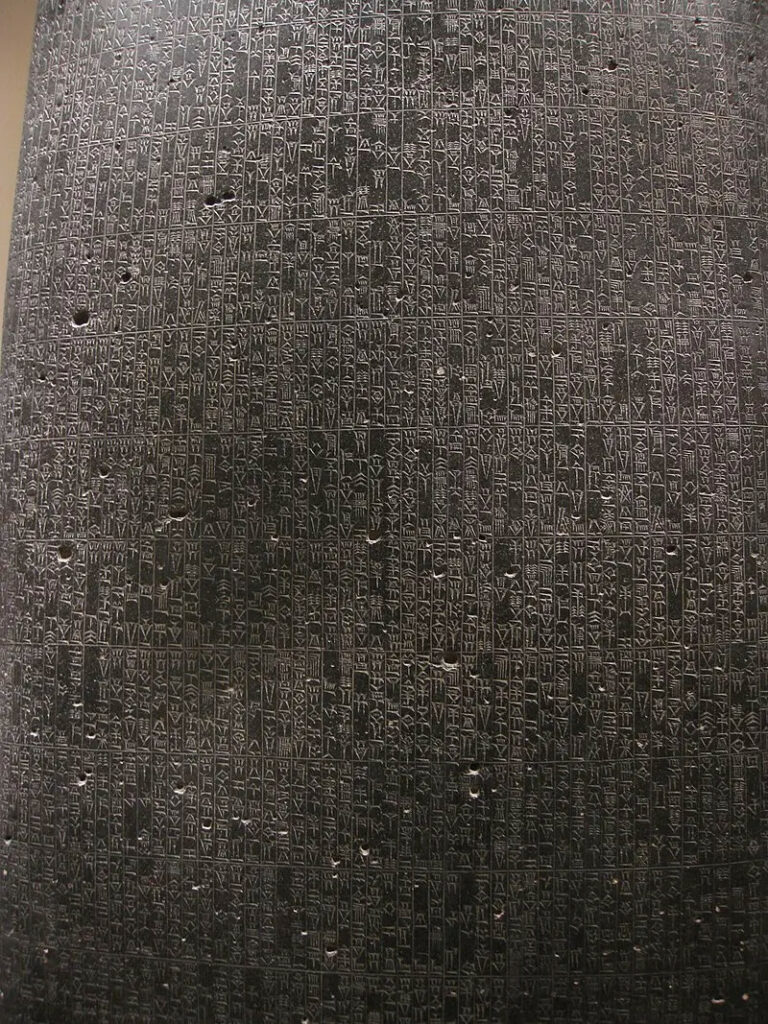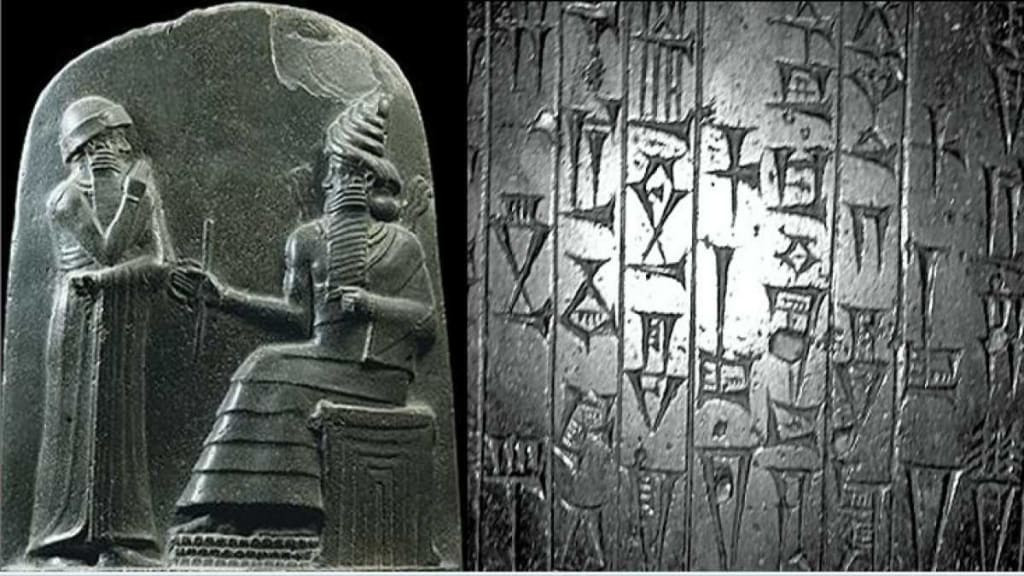The Unveiling of an Ancient Legal Masterpiece
In the blistering Iranian desert, French archaeologist Jean-Vincent Scheil stumbled upon a find that would alter our perspective on ancient legal frameworks. It was 1901, and the location was Susa, once a significant capital of the Elamite kingdom. Amidst the relentless sands of time, Scheil uncovered a grand diorite stele inscribed with what we now recognize as the Code of Hammurabi.
A Stone Tablet of Sacred Authority
Towering at over seven feet, this thick stone slab was far more than a mere artifact; it stood as a symbol of the advanced nature of the Babylonian civilization. At its pinnacle, a bas-relief illustrated King Hammurabi receiving the laws from Shamash, the sun deity, thereby granting the code divine legitimacy. Beneath this celestial imagery, 282 laws were intricately etched in cuneiform script, addressing a wide range of issues from theft and agriculture to familial relations and personal injury.

The Emergence of Systematic Justice
Hammurabi’s Vision for Order
Almost 3,700 years ago, as Babylon flourished under his governance, King Hammurabi set out to impose order and justice across his burgeoning empire. His code, compiled midway through his reign, was designed to ensure that every citizen, irrespective of their status, had access to legal remedies.

A Hierarchical Justice System
The Code of Hammurabi introduced a groundbreaking idea: a hierarchical approach to justice. Penalties varied not uniformly but according to the social rank of both the victim and the perpetrator. While this may seem inequitable by today’s standards, it marked a crucial advancement toward a structured legal system in ancient times.
The Lasting Significance of “An Eye for an Eye”
The Doctrine of Lex Talionis

Arguably the most renowned aspect of Hammurabi’s Code is its commitment to the principle of “lex talionis” – “an eye for an eye, a tooth for a tooth.” This notion of proportional justice, though severe by contemporary views, sought to ensure fair restitution for wrongdoings and deter future offenses.
From Ancient Babylon to Contemporary Courtrooms

The ramifications of Hammurabi’s Code have resonated for centuries, influencing legal systems across the globe. By codifying laws and making them accessible to the public, Hammurabi established the foundation for the concept of written law that transcends individual rulers.
A Source of Ancient Insight in Contemporary Times
Today, the Code of Hammurabi stands as more than just an archaeological curiosity. It serves as an invaluable resource for scholars and legal practitioners alike, providing a window into the development of legal philosophies. As we navigate ongoing discussions about justice and equity in today’s society, Hammurabi’s ancient insights remind us of humanity’s age-old pursuit of fairness and order.

From the weathered remnants of ancient Mesopotamia to the revered corridors of modern justice, the legacy of Hammurabi’s Code continues to motivate and guide our relentless endeavor toward a just and equitable world.

